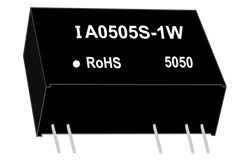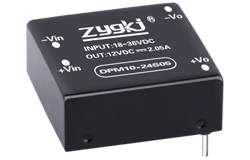news
AC Power Supply Module: Ensuring Reliable and Efficient Electrical Performance
Author: ZYG Power Module Time: 2023-11-17
Introduction
In today’s technology-driven world, the need for reliable and efficient electrical performance has become increasingly important. Whether it is in industrial settings, commercial applications, or even in our homes, a stable and uninterrupted power supply is crucial for the smooth functioning of various electronic devices and systems. This is where the AC Power Supply Module comes into play. This article explores the importance of AC power supply modules and how they ensure reliable and efficient electrical performance.
Importance of AC Power Supply Modules
AC power supply modules are essential components of electrical systems as they convert alternating current (AC) from the main power source into direct current (DC) at the required voltage and current levels. This DC power is then used to power electronic devices and systems, ensuring their proper functioning. Without a reliable AC power supply module, devices can experience voltage fluctuations, power surges, and other electrical disturbances that may lead to malfunctions, data loss, or even permanent damage.
Reliability
One of the primary objectives of an AC power supply module is to provide a stable and reliable power source. This means delivering a consistent voltage and current, free from fluctuations or interruptions. To achieve this, power supply modules employ various protective measures such as voltage regulation, current limiting, short-circuit protection, and over-temperature protection. These features not only safeguard the connected devices but also prevent potential hazards such as electrical fires or electrocution.
Efficiency
Efficiency is another crucial aspect of AC power supply modules. Inefficient power supplies waste energy in the form of heat, leading to increased power consumption and higher energy costs. Moreover, excessive heat generated by inefficient power supplies can affect the overall performance and lifespan of electronic components. AC power supply modules with high efficiency ratings ensure minimal energy loss, reduced heat generation, and longer operational lifetimes. They contribute to energy savings, lower utility bills, and a greener environment.
Power Factor Correction
Power factor correction (PFC) is a feature integrated into many modern AC power supply modules. It is aimed at improving the efficiency of power transfer from the AC source to the DC load by minimizing reactive power. Reactive power, caused by inductive or capacitive loads, reduces the overall power factor of the electrical system. By implementing PFC, AC power supply modules can minimize reactive power, improve power factor, and optimize energy consumption. This not only benefits the environment but also ensures reliable operation of electrical devices.
Advanced Protection Features
AC power supply modules often incorporate advanced protection features to safeguard the connected devices and ensure their longevity. These features include overvoltage protection, undervoltage protection, overcurrent protection, and short-circuit protection. Overvoltage protection prevents voltage spikes from damaging sensitive electronic components, while undervoltage protection safeguards against voltage drops that may cause devices to malfunction. Overcurrent and short-circuit protection prevent excessive current flow that can lead to device failure or fires.
Conclusion
In conclusion, AC power supply modules play a vital role in ensuring reliable and efficient electrical performance. They convert AC power into DC power at the required voltage and current levels, providing a stable and uninterrupted power source for electronic devices and systems. By incorporating features such as voltage regulation, current limiting, and various protection mechanisms, AC power supply modules guarantee the safety and longevity of connected devices. Furthermore, their high efficiency ratings and power factor correction capabilities contribute to energy savings and a sustainable environment. As technology continues to advance, the demand for reliable and efficient AC power supply modules will only continue to grow.
Previous: Benefits of a Modular PC Power Supply for Enhanced Performance and Flexibility
Next: Efficient and Versatile: Fully Modular 650W Power Supply for Optimal Performance
relevant information
-
2023-5-2
Designing an AC-DC Converter Circuit
Introduction AC-DC converters are electronic circuits used to convert an AC voltage to a DC voltage. These circuits are used in a wide range of devices, including power supplies for electronic equipment, battery chargers, and LED drivers. In this article, we will discuss the design of an AC-DC converter circuit. Design Considerations The design of an AC-DC converter circuit involves several considerations, including the input voltage, output voltage, output current, and efficiency. The input voltage is the AC voltage that is to be converted to DC. The output voltage is the DC voltage required for the load. The output current is the current that the load requires. The efficiency is the ratio of the output power to the input power....
View details -
2023-5-12
24V AC to DC Converter: Converting Alternating to Direct Current
Introduction In today's world, electricity is an integral part of our daily lives. It powers almost everything we use, from the lights in our homes to the computers we work on. However, the electricity we use is not always in a form that we can use. Alternating current (AC) is the form of electricity that is typically supplied by power companies, while most of our devices and appliances require direct current (DC) to operate. This is where a 24V AC to DC converter comes in handy. What is a 24V AC to DC Converter? A 24V AC to DC converter is a device that converts alternating current (AC) into direct current (DC). It takes in AC power and outputs DC...
View details -
2023-4-14
AC-DC Converter: Converting Alternating Current to Direct Current
An AC-DC converter is an important device that converts alternating current (AC) to direct current (DC). This conversion is necessary in many electronic devices because most of them require DC power to operate. AC-DC converters are used in a wide range of applications, from small household appliances to industrial machinery. In this article, we will explore the working principle of AC-DC converters and their different types. Working Principle of AC-DC Converters The basic principle behind an AC-DC converter is to convert the sinusoidal waveform of AC power into a DC voltage. This process involves rectifying the AC waveform and filtering the resulting waveform to produce a steady DC voltage. The rectifier circuit uses diodes to convert the AC waveform into...
View details -
2023-5-16
Designing an Efficient AC-DC Power Supply for Your Electronic Needs
Designing an efficient AC-DC power supply is crucial for any electronic device. Power supplies are responsible for converting the alternating current (AC) from a power outlet into the direct current (DC) needed to power electronic devices. A poorly designed power supply can result in wasted energy, decreased battery life, and even damage to the electronic device. In this article, we will discuss the key considerations for designing an efficient AC-DC power supply for your electronic needs. 1. Voltage Requirements The first consideration when designing a power supply is the voltage requirements of the electronic device. The voltage required by the device determines the type of transformer needed in the power supply. A transformer is a device that converts the input...
View details -
2023-5-8
Designing an AC-DC Converter Circuit: A Step-by-Step Guide
Introduction An AC-DC converter circuit is an electrical circuit that is used to convert alternating current (AC) to direct current (DC) voltage. This converter circuit is commonly used in electronic devices such as computers, televisions, and audio equipment. The AC-DC converter circuit design can be complex, and it requires a good understanding of electronic circuits, components, and their properties. In this article, we will provide a step-by-step guide to designing an AC-DC converter circuit. Step 1: Determine the Required Voltage and Current The first step in designing an AC-DC converter circuit is to determine the required voltage and current for your application. This will depend on the electronic device that you are designing the circuit for. For example, a computer...
View details -
2023-7-25
High quality Medical Power Series: Unlocking the Secrets of Healthcare Excellence
In today's fast-paced and ever-evolving world, the healthcare industry plays a vital role in ensuring the well-being of individuals and communities. With advancements in technology and the constant need for innovation, healthcare excellence has become a focal point for organizations worldwide. The Medical Power Series: Unlocking the Secrets of Healthcare Excellence aims to shed light on the strategies and practices employed by healthcare professionals to deliver exceptional care and achieve remarkable outcomes. The first key aspect of healthcare excellence lies in the recruitment and retention of highly skilled and compassionate medical professionals. The series emphasizes the importance of selecting individuals who possess not only the requisite expertise but also a genuine passion for patient care. Through comprehensive screening processes and...
View details



















